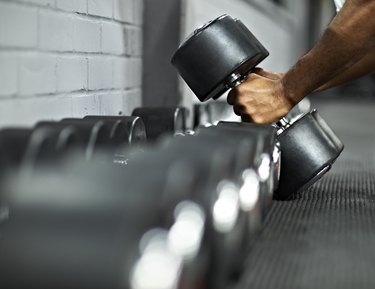
If you're struggling with morbid obesity, you're far from alone. As the Centers for Disease Control and Prevention notes in its 2015-2016 statistics, about 93.3 million U.S. adults — or just under 40 percent of the population — were designated as obese.
Obesity is typically defined as having a body mass index, or BMI, of 30 or higher. As noted in a June 2013 article in the International Journal of Obesity, morbid obesity is defined as having a BMI of more than 50.
Video of the Day
Video of the Day
Your Health Matters
Your doctor may already have told you that being obese raises your risk of developing serious, potentially life-ending health conditions — including heart disease, stroke, Type 2 diabetes and certain types of cancer, according to the CDC.
Obesity also raises your health care costs. As noted in the April 2017 issue of the Journal of General Internal Medicine, obesity raises the medical care costs of adults by an average of $3,429 per person, per year (in 2013 dollars), and the cost of treating obesity-related illness made up 28.2 percent of total U.S. health care spending in 2013.
And the rates of morbid obesity continue to rise rapidly in the U.S. The good news is that there are a number of things you can do to take back control of your health.
The first is partnering with a doctor — a crucial ally for determining what types of exercise will maximize the benefit to your body while minimizing risks. Your doctor might even refer you to a facility that has specialized exercise equipment to accommodate your body, and medical staff on hand to help out with any issues that come up during your workout.
Best Exercise Equipment for Morbidly Obese People
The best exercise equipment for morbidly obese people should meet exactly the same criteria as for anybody else: It should fit your body, be stable enough that you can get in and out safely, and have a designated weight limit that surpasses your own body weight.
Commercial exercise equipment almost always has a weight limit of greater than 300 pounds; in some facilities, you'll find 500-pound capacity exercise equipment. The staff at any gym facility should be able to tell you what the weight limits are on their equipment, even if they have to dig a bit for that information. Sometimes the weight limit is posted on the equipment itself, but the labels are usually quite small.
If you're purchasing exercise equipment for home use, consider buying commercial-grade exercise equipment. It's a more expensive investment, but it's safer for you and lasts a lot longer than home-grade exercise equipment — which usually ends up evening out the cost in the long run.
A recumbent bike may be particularly comfortable for you, because the broad seat and backrest give your body more support than you'd get on an upright exercise bike. Stationary cycling is also non-weight-bearing, so you don't need to support your body weight — just pedal away.
If you're able to walk, a treadmill is another excellent choice. Treadmills help you build functional strength and endurance, provide a relatively stable platform, and are easier to get on and off of than many other types of exercise equipment.
Your doctor might also suggest that you skip the exercise machines entirely and head straight to a swimming pool. Swimming, water aerobics and water walking/jogging are all excellent ways to work out with a minimum of stress on your body.
Consider Resistance Training
Finally, your doctor might also suggest lifting weights. Look for commercial-grade exercise equipment with an appropriate weight limit, and choose machines that don't require you to do any acrobatics getting in and out: Use a seated leg curl instead of a prone leg curl, a seated leg press instead of an inverted leg press, and so on. There are even exercise machines that will let you do a core workout in a seated position.
Cable-pulley machines and free weights can be great choices for exercisers with obesity, because there's no frame to fit your body inside — but depending on the exercises you choose, you may need to stand or you may need extra agility to get up and down from weight benches and change out the cable pulleys. And again, the weight benches should have appropriate weight limits.
Talk to a fitness or rehabilitative professional about which cable or free weight exercises are best for you. Some of the standing or seated exercises they might recommend include:
- Standing/seated rows
- Standing chest presses
- Triceps push-downs
- Standing/seated lat pull-downs
- Chest flies and reverse flies
- Standing biceps curls
Read more: Exercise Plans for Obese Men
Tip
Did you know? As noted by the Obesity Action Coalition, even a 5 to 10 percent weight loss can have positive impacts on your health. These include improving your cholesterol profile, reducing high blood pressure, lowering your risk of diabetes, reducing inflammation and improving insulin resistance.
- International Journal of Obesity: "Morbid Obesity Rates Continue to Rise Rapidly in the US"
- Centers for Disease Control and Prevention: "Adult Obesity Facts"
- Journal of General Internal Medicine: "The High and Rising Costs of Obesity to the US Health Care System"
- Obesity Action Coalition: "Benefits of 5-10 Percent Weight Loss"